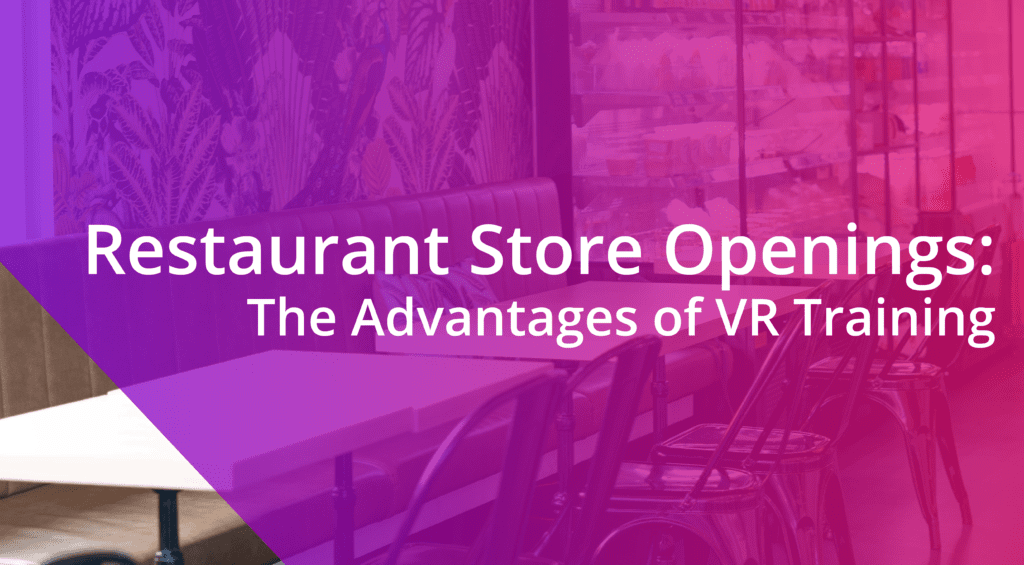In the bustling world of quick-service and fast-casual restaurants, the quest for seamless, efficient, and impactful store openings is a perpetual goal. Virtual Reality (VR) training revolutionize the way new restaurant staff are trained, particularly during store launches. VR training offers a groundbreaking solution that not only streamlines training but also minimizes food waste, enhances speed, and optimizes the entire onboarding process, and more especially for new restaurant openings.
Traditional methods of training for new restaurant openings often involve weeks of practice using real food—a costly and wasteful process. However, with VR training, the paradigm shifts dramatically. Here are the unparalleled advantages of incorporating VR into restaurant store openings:
1. Efficiency Redefined
VR training eliminates the need for using real ingredients during practice sessions. Instead of spending weeks familiarizing staff with food preparation, VR simulations enable employees to engage in lifelike scenarios without any slowdown in customer service. This significantly accelerates the training process, slashing the duration by up to a staggering 75%.
2. Zero Food Waste
One of the most glaring issues during traditional training methods is the substantial food wastage incurred during practice sessions. With VR, there’s no need for excess ingredients or resources. Restaurants can bid farewell to the days of disposing of unused food, translating to substantial cost savings and a marked reduction in environmental impact.
3. Limitless Iterations and Trials
VR empowers staff to undergo unlimited training sessions and trials without any tangible resources being utilized. This freedom to practice repeatedly without repercussions allows for a higher level of skill acquisition and confidence among employees, ensuring they’re better prepared for real-time scenarios.
4. Scalability and Consistency
For restaurant chains planning multiple store openings in a year, VR training offers unparalleled scalability and consistency. With just a handful of VR headset kits, numerous employees across various locations can be trained simultaneously, maintaining a standardized level of expertise and service quality across all stores.
5. Cost-Effectiveness
Beyond the immediate reduction in food wastage, VR training proves to be a cost-effective alternative. Investing in a small number of VR headset kits for multiple store openings results in substantial long-term savings compared to the recurrent expense of real ingredients for each training cycle.
Conclusion
The incorporation of VR training into restaurant store openings is a paradigm shift in the industry. Smooth Soft’s innovative approach not only expedites the training process but also aligns with sustainability goals by curbing food waste. As the restaurant landscape evolves, embracing VR technology emerges as an indispensable tool for optimizing operations, enhancing efficiency, and ensuring a remarkable customer experience right from the inaugural day of a new store.
In a world where time is money and sustainability is imperative, VR training stands tall as the cornerstone of a new era in restaurant operations, reshaping how we approach staff training and store launches. Smooth Soft’s pioneering service is more than just a trend—it’s a transformative leap towards a more efficient and conscientious restaurant industry.

